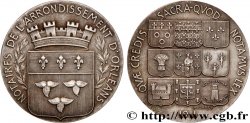E-auction 522-438814 - fme_614761 - 19TH CENTURY NOTARIES (SOLICITORS AND ATTORNEYS) Médaille, Notaires de La Marne
You must signin and be an approved bidder to bid, LOGIN TO BID. Accounts are subject to approval and the approval process takes place within 48 hours. Do not wait until the day a sale closes to register. Clicking on « bid » constitutes acceptance of the terms of use of cgb.fr private e-auctions.
Bids must be placed in whole Euro amounts only. The sale will start closing at the time stated on the item description; any bids received at the site after the closing time will not be executed. Transmission times may vary and bids could be rejected if you wait until the last second. For further information ckeck the E-auctions F.A.Q.
NO BUYER'S FEE.
NO BUYER'S FEE.
| Estimate : | 100 € |
| Price : | 32 € |
| Maximum bid : | 34 € |
| End of the sale : | 17 April 2023 18:37:40 |
| bidders : | 6 bidders |
Type : Médaille, Notaires de La Marne
Date: 1902
Metal : silver
Millesimal fineness : 850 ‰
Diameter : 35,5 mm
Orientation dies : 12 h.
Engraver Brenet
Weight : 24,67 g.
Edge : lisse + corne 2ARGENT
Puncheon : (corne) 2ARGENT
Rarity : R2
Coments on the condition:
Patine hétérogène avec des marques de coup sur la tranche. Présence de quelques taches
Catalogue references :
Obverse
Obverse legend : ANÉPIGRAPHE.
Obverse description : Minerve casquée assise à gauche, couronnée de laurier entre les mains, palmes et couronnes sur un socle. Signé : BRENET.
Reverse
Reverse legend : REPUBLIQUE FRANCAISE - *LOI DU 12 AOÛT 1902* // ASPIRANTS / AU / NOTARIAT / - / COMMISSION / D'EXAMEN / MARNE.
Reverse description : Légende circulaire et en 6 lignes.
Commentary
Poinçon Corne 2ARGENT. Flan mat.








 Report a mistake
Report a mistake Print the page
Print the page Share my selection
Share my selection Ask a question
Ask a question Consign / sell
Consign / sell
 Full data
Full data



